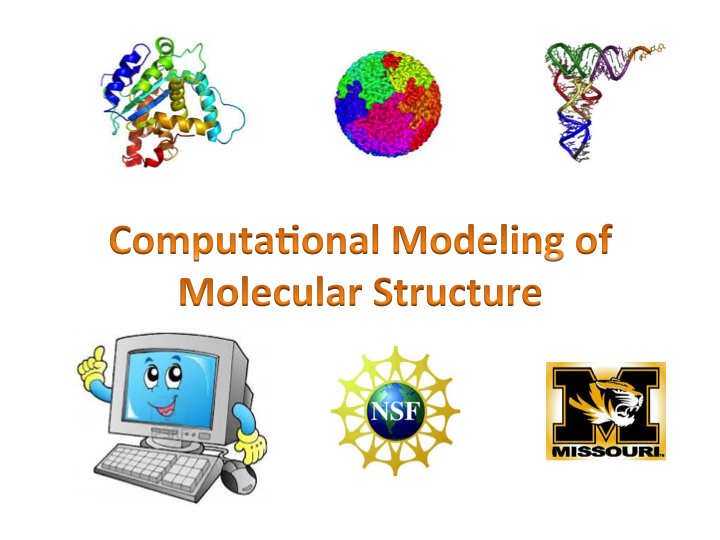
Title: Computational Modeling of Molecular Structures - one of Big Bio Data Mining and Modeling Courses (CMP SC 8170)
Location: Naka Hall 353
Time: Mon & Wed, 4:00 pm - 5:15 pm, 2019 Spring Semester
Instructors: Prof. Jianlin Cheng
Office hours: Wed 3:30 - 4:00, Naka Hall 109
Acknowledgement: The course development is supported by a National Science Foundation CAREER award. Some images and figures used in the lectures are provided by images.google.com and other sources.